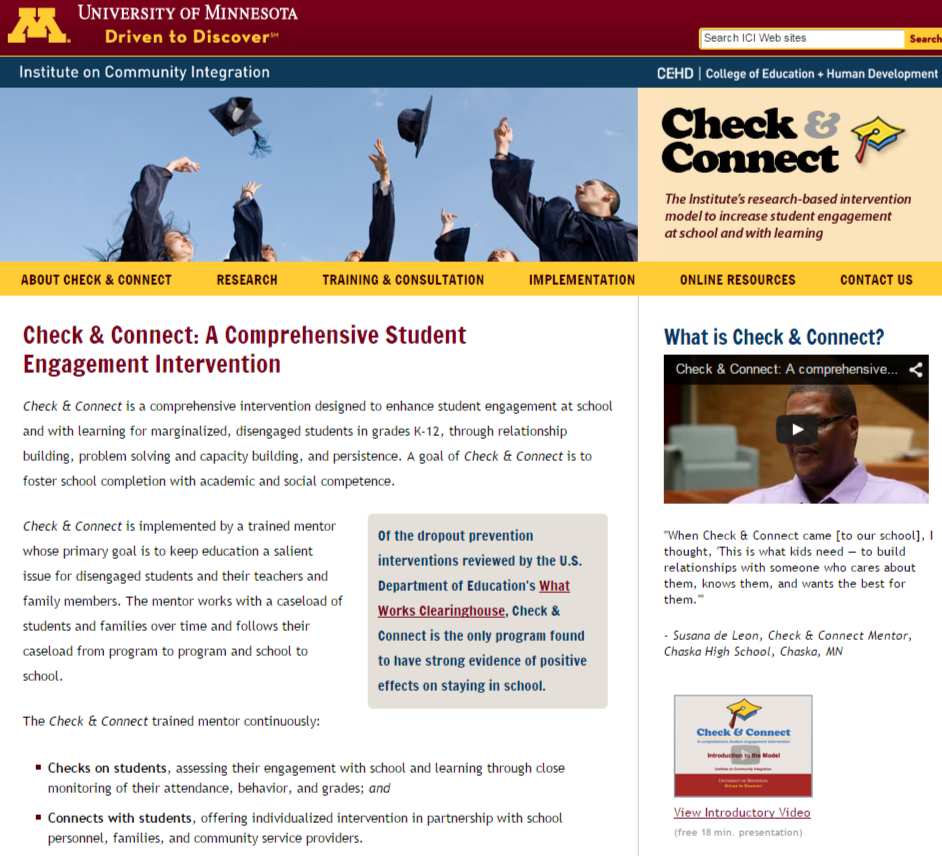 Read this summary, arriving via listserv from the University of Minnesota. Additional comments in grey are from a review of the book by Angie Pohl, Ph.D.
Read this summary, arriving via listserv from the University of Minnesota. Additional comments in grey are from a review of the book by Angie Pohl, Ph.D.http://checkandconnect.umn.edu/email/2015.03.04.html
C&C Mentoring Tips: Keys to
Effective Problem-Solving with Students
The following tips for
effective problem-solving with students were adapted from the
book, Conducting Student-Driven
Interviews: Practice strategies for increasing student involvement and
addressing behavior problems, by John J. Murphy.
Focus on future possibilities rather
than past problems
- Focus on small, changeable aspects of a student’s
future.
- Don’t spend too much time on “problem admiration”
– allow students to share their concerns and frustrations, validate their
feelings, and then move to what the student wants to be different very
quickly.
Encourage students to keep doing
what works
- Identify what is right in students’ lives and help them
apply those strengths and resources toward solutions.
- Build on exceptions! Help students to
see when the problem does not occur and think about what
they’re doing right in those situations.
- Find out what students have tried. Ask
about what worked, even a little (Pohl).
Encourage students to do something
different if what they’re doing doesn’t work
- Students often get stuck in a pattern of trying similar
things over and over again and expecting a different results
- Encourage students to try something else when what
they’re doing or the solutions they have tried don’t work.
Meet students where they're at
- Hear and respect students' opinions
- Acknowledge students' freedom to think for themselves and make their own choices
- Help students think through the choices they have made and will make
- What have they learned from past choices? What choices
align with your values? What choices would you feel most comfortable with
Use reflective listening
skills - SPACE (adapted from Costa & Kallick, 2000)
- Silence:
Pausing – permit yourself and students the opportunity to pause and
reflect in silence
- Paraphrasing:
Rephrasing students’ comments in shorter form to demonstrate you heard and
understand what they said
- Accepting
nonjudgmentally: Accepting, affirming, and validating students’
perceptions and experiences
- Clarifying:
Asking questions to ensure your understanding; helping students to clarify
the problem and describe it in observable terms
- Extending: "Tell me more about…"
Help students prioritize
problems
- Help boost student hope by narrowing a wide range of
problems into a specific, manageable focus
- Allow students to decide which problem they
think is most important to focus on
Help students build
solutions to their problems by creating goals that matter to them
Identify and draw on
natural resources in the students' lives such as interests, talents, other
adults, peers, etc.
- Resilience. Ask students:
- How have you kept things from getting
worse?
- Why haven’t you given up? How have
you managed to hang in there?
- Special interests, talents, and hobbies. Ask students:
- What do you enjoy doing outside of
school?
- If you could do anything you wanted,
what would you do?
- Heroes and influential people. Ask students:
- Who are your biggest heroes? Who do you
look up to or respect the most?
- Who at school do you respect the most?
- How could these people help you? What
advice would they give you?
- Ideas and opinions. Ask students:
- I’ve heard other people’s ideas, but I
want to know what you think would help improve things?
- What would you say to someone in a
similar situation? What can I (as a mentor) say to someone who…(Pohl)?
http://checkandconnect.umn.edu/
Review of the book by Angie Pohl, PhD.
https://attendengageinvest.wordpress.com/2013/06/03/problem-solving-with-students-not-for-students/


No comments:
Post a Comment